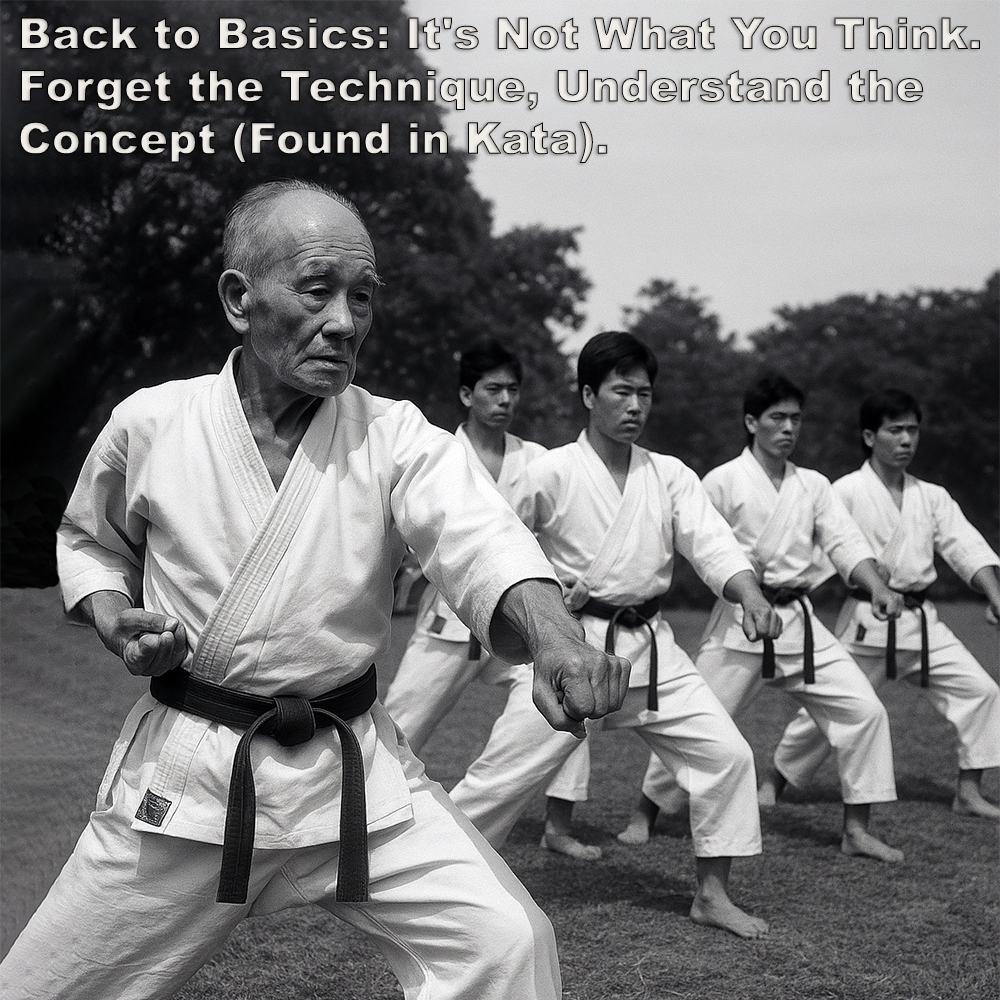
(Approx 2 minute 50 second read)
Ever looked at a kata and thought, “There’s a theme here”? Well you’re probably right.
.
But to see it, you need to look beyond the block, punch, and kick. You have to go deeper than the surface-level mechanics most people focus on when working through bunkai.
.
Let’s ask a familiar question: which came first – the chicken or the egg? Or in our case, which came first – basics or kata?
.
Most people would say that the basics came first, then after the two-person drills, the kata were created as a mnemonic, a solo practice template.
.
I suggest the basics come from kata. The kata were there already (after the drills remember), and what we now call the basics were extracted from them later.
.
Here’s an example. If I were creating a drill to strip a hand away from my clothing, I’d start by having someone actually grab me. I’d need to test it.
.
Otherwise, how would I know if it worked? I could call anything a grab-stripping technique – but if it doesn’t work under pressure, what’s the point?
.
So what about before the kata were assembled?
.
At the time of their creation, kata were an expression of a person’s fighting method – the two-person drills. A way of capturing the core ideas of their system. Kata weren’t about collecting random techniques – they were about preserving a method of fighting.
.
Of course, today it’s all about techniques. We have hundreds of them, each with their own name (here I go repeating myself).
.
When someone starts karate today, we begin with techniques like punches, ‘blocks’, and kicks – what we call the basics. But I believe, those techniques were drawn from kata. So while they’re basic in form, they aren’t the real basics of the art. The real basics – the ones kata were created to preserve – are the concepts behind the techniques.
.
The real ‘basics’ of a kata are the key ideas or concepts it teaches. The techniques themselves are just expressions of those concepts – examples, not definitions.
.
Let’s go back to when a kata was created. A person with a particular method of fighting – developed from experience – decided to capture the essence of that system in a form that could be passed on. That form was the kata.
.
They didn’t think in terms of “a rising block” or “a stepping punch” – they thought in terms of tactics, concepts, and responses. They created kata as concept-specific, not technique-specific. If you understand the concept, the techniques become fluid. Limitless.
.
Yes, kata contain techniques – but those techniques demonstrate a theme. The kata teaches a principle; the technique is one way of showing it.
.
I believe the basics of a kata are the concepts it teaches – not the techniques it uses.
.
This may seem completely at odds with how most people view ‘basics’. For many, basics are punches, kicks, and ‘blocks’ (let’s call it properly – receiving). But that’s only part of the story.
.
A handful of people will understand what I mean. They’ll see that the difficulty in grasping the different fighting styles and concepts within kata often comes down to how we were taught – through a rigid lens called ‘traditional karate-do’.
.
But tradition doesn’t always mean understanding. Sometimes, it just means repetition.
.
So why don’t we teach karate that way anymore? Why don’t we follow the same process the originators of kata used?
.
Because over time, karate shifted from a combative system to a system of instruction. What was once personal and principle-based became public and standardized. Teaching had to be simplified – made more digestible, especially for children and larger groups. So instead of starting with concepts and pressure-tested drills, we broke things down into manageable chunks: ‘blocks’, punches, and kicks – what we now call the basics.
.
It’s not wrong. It’s just different. But if we stop there, we never get to the depth – the why behind the movement.
.
If we want to truly understand our art, we must go back – not to how we were taught, but to why kata were created in the first place.
.
.
Written by Adam Carter
.
